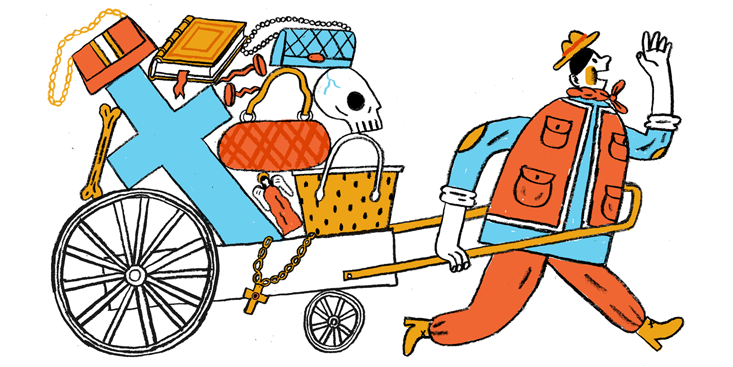Seek balance in all things—including subterfuge.
Immanuel Kant famously argued that lying is a parasite on truth-telling. But parasites must be self-limiting: Killing your host is an evolutionary dead-end, so a successful parasite must keep from pushing its growth to the utmost.
Lying, then, is often caught in a balance between too little and too much. Fraud and fakery limit themselves, and nothing-but-the-truth is something nobody wants.
Here are five examples of faking that isn’t too big, and isn’t too small, but just right.
Fake purses and saints’ bones
Holy relics were one of the most important trade items during the Middle Ages in Europe—mainly fragments of the bodies of saints and martyrs, but also objects connected with the life of Jesus or the apostles, such as fragments of the True Cross, Mary’s robe, and even one of the baby Jesus’ diapers (which is still to be seen on special occasions in the German city of Aachen). A vast network of traders and thieves supplied the needs of cathedrals, churches, and private collectors, and some historians have suggested that competition for control of the relics trade was a primary motivation for the Crusades.1 The relics market thrived despite the fact, which must have been obvious at the very least on numerical grounds, that many of the goods for sale were fraudulent. At one point 21 different churches claimed to have the Holy Foreskin, while the quantity of nails from the true cross that Mark Twain encountered on his European travels amounted to “a keg” all told. “And as for bones of St. Denis,” he said, “I feel certain we have seen enough of them to duplicate him if necessary.”

The relics trade has some analogies to our modern trade in luxury goods. These are coveted for their associations and provenance, while being perhaps physically indistinguishable from much cheaper counterfeits. And here, too, we have thriving trade despite a substantial proportion of fraud. Is this because zero counterfeiting is not, in fact, the optimum, even from the perspective of authorized producers?
The availability of counterfeits can allow communities where few can afford the genuine items to remain aspirationally connected to brands that they might be able to purchase in the future.2 Consumer trend forecaster Jaana Jatyri put it this way: “Many luxury brands consider counterfeiting a form of viral marketing.”
A more intriguing theory, put forward in a detailed model by the economist Jen-Te Yao, shows that the “Veblen effect”—the inclination of consumers to value items more highly when the price is higher—allows producers of genuine goods to benefit from an enforcement regime that is sufficiently stringent to impose high costs on the counterfeiters, but not so stringent as to completely eliminate them. The availability of counterfeits increases the willingness of choosy consumers—“snobs” in the professional jargon—to pay high prices for distinctively “genuine” luxury goods.
Studies of consumer opinion have confirmed that the availability of counterfeits raises the price that people consider appropriate for the genuine goods. For example, in one study participants were shown a Louis Vuitton bag and told that counterfeits were common (“high-counterfeit”) or uncommon (“low-counterfeit”). The high-counterfeit group estimated the price of the genuine bag as more than twice as high, relative to the fake bag, as did the low-counterfeit group.
If religious relics operated according to the same principle, then we might surmise that the relevant authorities could have let the occasional fake scroll through on purpose. Whatever the case may have been, the punishment was more severe: Whereas modern authorities sometimes have fake product burned in exemplary bonfires, forgers of medieval relics could have found themselves being burned along with their wares.
The Ivy League
There is a tier of elite universities, a degree from which is seen as a huge boost to a graduate’s life and career prospects. There are gaps, however, between the credential and its implied ability, which inevitably create openings for fraud: Think of the massive online market for student essays, or the Long Island teenagers who were arrested for taking college admissions exams (SAT and ACT) under the false identities of contemporaries with more money and less brains. The motivations here are straightforward—neither the buyers nor the sellers have any personal responsibility for the overall credibility of the system....MORE